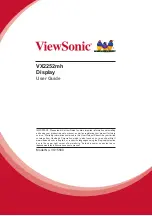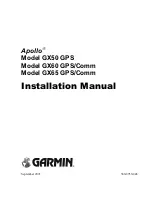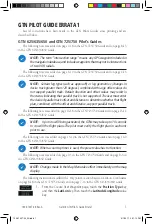
Mark V and Mark VII EGPWS Pilot’s Guide
Smart Landing
TM
060-4241-000
108
Rev H, August 2011
Excessive
Speed
Monitor
Continued
When a circling approach is flown, the aircraft speed remains
high on the downwind leg. Therefore, Excessive Speed
Monitor is not enabled until 600 ft AFE (typical gate) unless
the aircraft is fully configured to land, which indicates the
aircraft is committed to land.
V
REF
is typically the stall speed multiplied by 1.3. For an
Airbus FMGC, V
APP
is V
LS
(Airbus equivalent of V
REF
) plus
additional factors such as wind. Because V
APP
on Airbus
already has wind factors added, the Excessive Speed Monitor
Envelope for Airbus aircraft will be different from one for
Boeing aircraft using V
REF
, and can be set more sensitive.
There is a potential association between the Stabilized
Approach Monitor
Too Fast
and a Windshear condition. The
windshear will have alert priority over the Excessive Speed.
Crew action should be focused on the windshear escape.
Excessive
Approach
Angle
Monitor
The Excessive Approach Angle monitor provides the flight
crew with awareness of a possible unstabilized approach if the
approach angle to the destination runway becomes too steep.
This function, if enabled, provides a
“Too High – Too High”
callout if the approach angle to the destination runway
becomes too steep.
The aircraft must be lined up with the destination runway on
final approach to enable this function. When a circling
approach is flown, the aircraft can fly over the runway on
downwind leg, which makes computed angle to the runway
very large. Therefore, Excessive Approach Angle Monitor is
not enabled until 600 ft AFE (minimum circling minima)
unless the aircraft is fully configured to land. The destination
runway must be identified with very high likelihood and the
runway location must be accurate for this function to work
properly. The aircraft position must also be accurate (requires
a Direct-GPS).
Crew briefing for side-step approach and approach to a
runway with a temporary displaced threshold should include
the potential
Too High
and/or
Unstable
alert and appropriate
use of inhibit control if available.
Unstable
Approach
Monitor
The Unstable Approach monitor provides the flight crew with
awareness of a possible unstabilized approach. This function
provides an “Unstable – Unstable” callout and illuminates the
GPWS lamp if the aircraft has not reached the 450 ft AFE
gate in a stabilized condition. Annunciation of one of the
previously discussed monitors must have been activated
before the Unstable annunciation is provided so the crew has
an indication of why the aircraft is considered unstable.
Summary of Contents for EGPWS MK V
Page 1: ...FILE ONLY Release 08 Aug 2011 14 50 02 MST Printed on 01 Mar 2013 ...
Page 2: ......
Page 4: ......
Page 124: ...Mark V and Mark VII EGPWS Pilot s Guide 060 4241 000 118 Rev H August 2011 ...
Page 125: ......




































